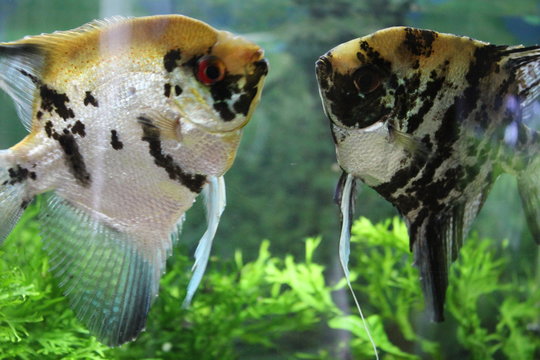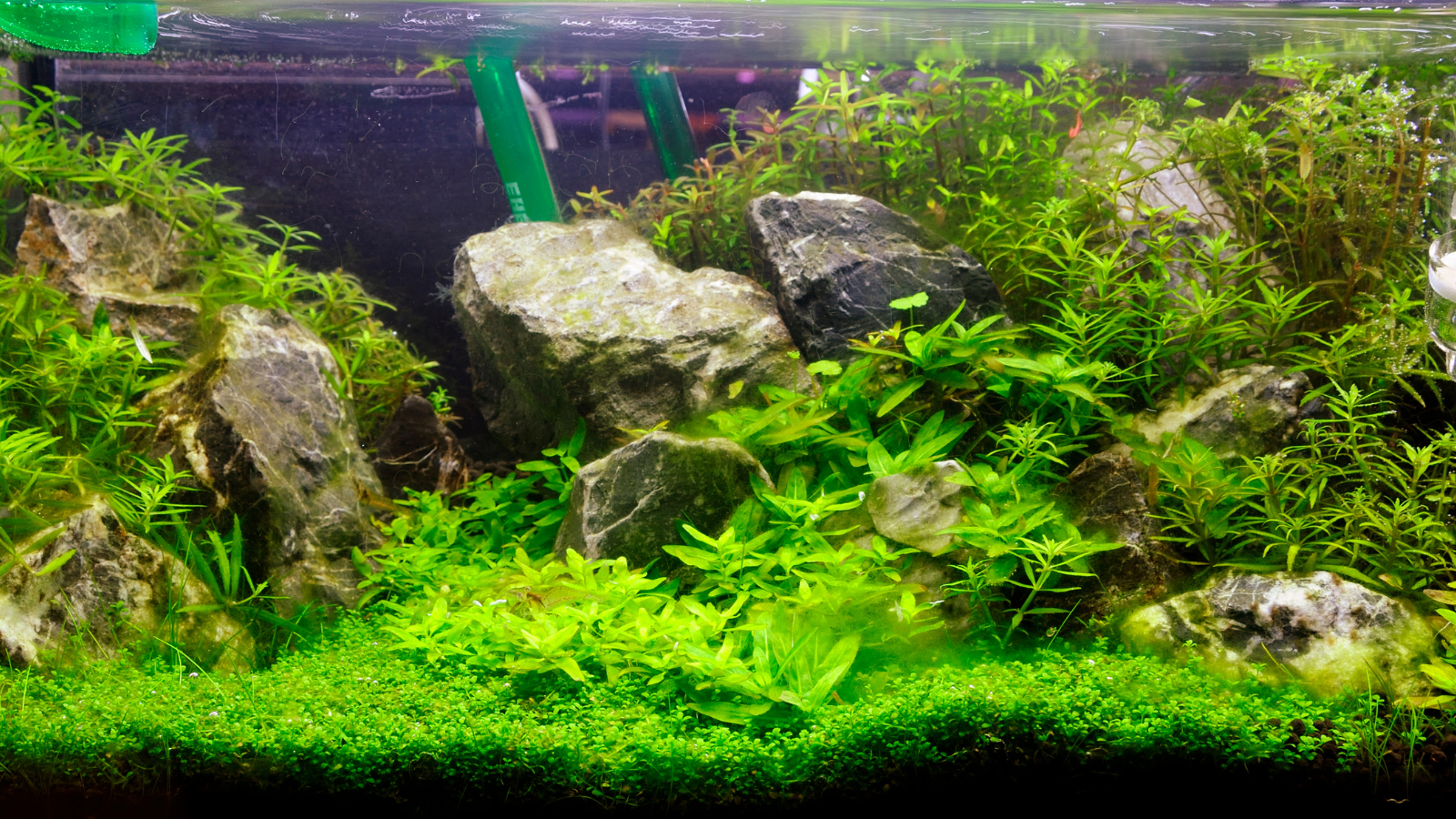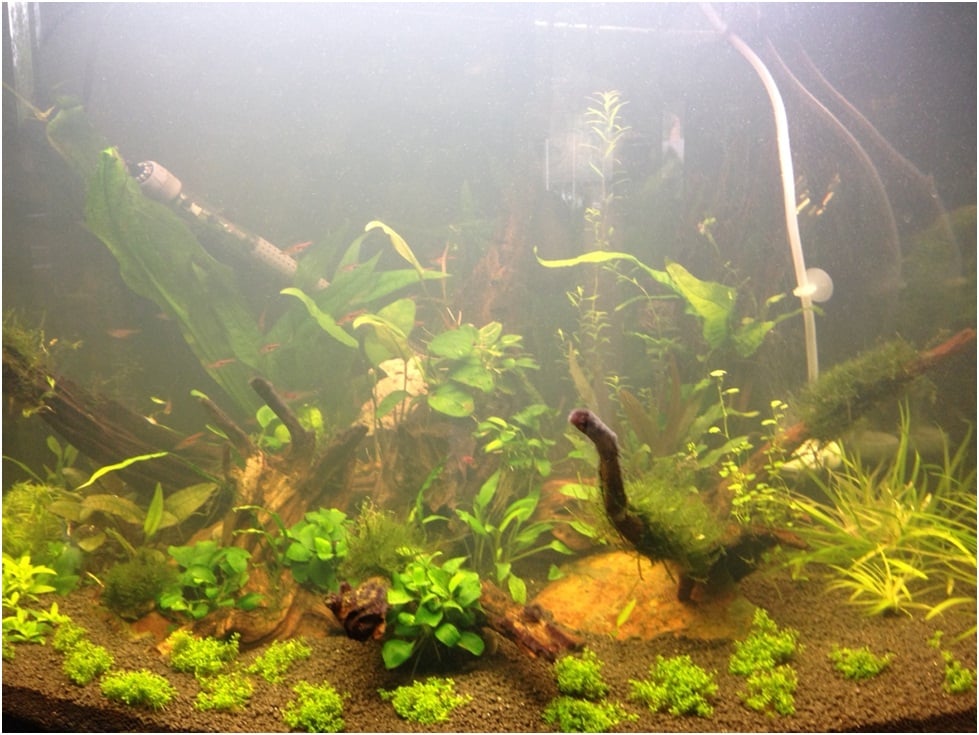
The angelfish (Pterophyllum scalare), also known as a freshwater angelfish, is one of the most expressive and dignified species kept in hobby aquariums. It gained popularity thanks to its unusual build - its body is narrow and high, resembling a disk. In nature, they can move in densely overgrown reservoirs and quickly escape from predators. However, how are angelfish doing in home aquariums?
Occurrence
It occurs in groups in the upper and middle course of the Amazon River along with its tributaries. It can also be found in the Orinoco River Basin (Venezuela) and the Essequibo River in Guyana.
In its environment, it lives among the roots and plants. Its natural, highly flattened shape makes it easier to flow between the flora and allows it to hide.
Characteristics
The angelfish is one of the most beloved members of the cichlid family. In aquarium shops, you can now find several species of the genus Pterophyllum, i.e.the altum angelfish,the teardrop angelfish and freshwater angelfish. Manacapuru is also very popular among wild varieties. Both wild and varietal forms are available for sale. The choice is wide - mainly it concerns the color of the body (white, black, red, green, blue, silver-black koi). Angelfish reach an average of 15 cm in length and 22 cm in height. Apart from the narrow, high body and interesting coloration, their advantage is the effective dorsal fins (especially the dorsal and anal fins). Gender is rather difficult to distinguish, the angelfish shows little sexual dimorphism. The main difference is the shape of the genital wart visible during spawning. In the female it is long and blunt ended, in the male it is short and sharp.
Aquarium
The tank for 5-6 angelfish should be at least 120-150 cm long and 50 cm high. Scalar is a "thermophilic" fish - the optimal water temperature is between 24-30 ° C. The proper pH is 6-7.4 and the hardness is 0-15 ° n. The most suitable for scalars is a sandy bottom with the addition of leaves, decorated with roots and branches. Angelfish often dig in the substrate and can choke on small pebbles (on gravel substrate). Fish are unlikely to damage plants (unless they are poorly rooted) so the flora can be dense. It is worth planting the back of the aquarium with tall species that will create the background. Angelfish will flow between the greens. Angelfish like some shading of the tank and numerous hiding places. The filtration should be strong (the optimal composition of the kit is an efficient pump and a filter with several filter cartridges). Water should be changed on average every 2 weeks (20-30%). With a drastic change in conditions or under poor conditions in general, scalar diseases such as flexibacteriosis, mycobacteriosis or necrosis may appear.
One of the most common questions in pet stores about this species is: What kind of fish can angelfish be kept with? Aquarium fish scalars are territorial, they can show aggression towards smaller fish, as well as individuals with long fins. As a rule, fast fish (e.g. zebrafish, Siamese algae eater) can cope with the "interest" of angelfish. Angelfish do not mind bottom fish as e.g. bushymouth catfish. A lot also depends on the size of the tank - in too small scalars are nervous and their victims have limited space to escape. It is one of the most intelligent aquarium fish, unfortunately it can go hand in hand with malice.
Feeding
Angelfish is voracious and omnivorous. They do not disdain universal food, both floating and quickly sinking to the bottom. However, they prefer meat food - live, frozen or dried. It is worth giving them bloodworms, mosquito larvae, eyedrops and water fleas. Unfortunately, they can also eat the fry of other fish.
Breeding
Angelfish are monogamous and form strong partnerships. In this case, the breeder is not able to match the pair, the animals must pair themselves. In order to increase the chance of offspring, scalars should be raised in temperature (even up to 32 ° C), water hardness should be lowered and live food given. Fish should have a lot of hiding places. They will fiercely defend their territory, especially in smaller aquariums. Spawning takes 1-2 hours. The female, with the help of a seam, sticks the eggs to the glass, plants, stones or accessories. The male follows the female and fertilizes the eggs. Angelfish protect eggs by scaring off other fish. They fan their fins in a characteristic way, supplying more oxygen. Scalar roe is not entirely safe. It may happen that one of the parents (especially those less experienced) will eat it. Eggs must be protected from strong light. You can also pour a little bit of the preparation into the water to prevent mold from the roe. Hatching takes 2-4 days. The young use the gallbladder for the first few days. The scalar fry begin to swim around the aquarium after a week. In the first month, it is best to give him micro-foods, e.g. in a dusty form. Artemia plays a large role in the diet. Scalar reaches sexual maturity after 7-10 months.


